I wish all my works would hang together in my father’s house, or in my grandfather’s seaside house…
Mzekha Makharadze
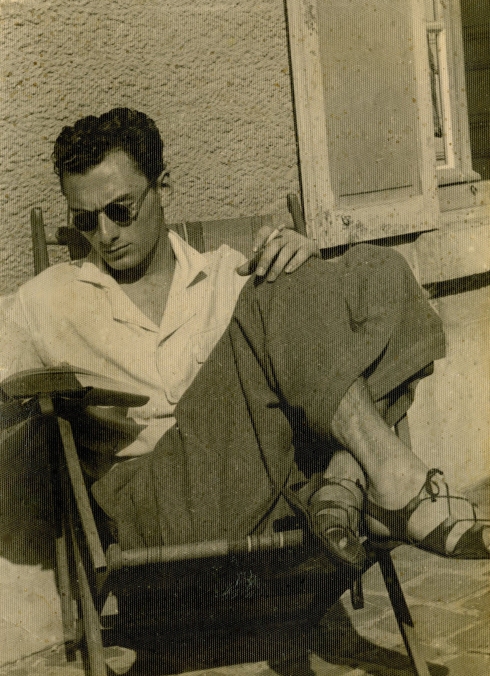
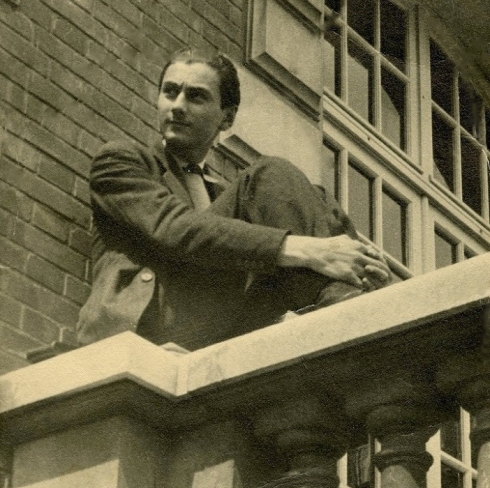
In 1953 at an exhibition in New York’s „Montess Galery“, a young man of foreign origin and unusual last name – Svimon (Petre) Dadiani, said to be an American poster painter, drew a particular attention. In addition, he received a special prize for his abstract sculpture “ Black Torso”. „Art Gigost“ magazine wrote: „Works of 19 painters displayed as a part of exhibition give us a good idea of the modern American sculpture… there are distinguished, outstanding works in this exhibition… Dadiani employes a whole system of stylizations in his works, reminiscent of Modogliani’s stylization. Refined abstract curves of his sculpture are based on exellent knowledge of human anatomy. His works reveal the authror’s sense of humor and conveys peculiarities of a person’s character with great power.“
The life and the art biography of Simonika (Petre) Dadiani is linked with 1940’s America. He travelled from Paris to San Francisco, where a succesfull career has its own rules and implies an unusual adventure. The French and American press in their positive reviews charachterised Simonika Dadiani as a refined and European-minded painter… Among his American tour, his exhibitions were held in such prestigious venues as San Francisco Fine Art Museum (1952), Oakland Art Gallery (1952), New York Grand Central Art Gallery (1951), „Worth Avenue“ gallery (1953),San Francisco Legion of Honor Museum (1967)…
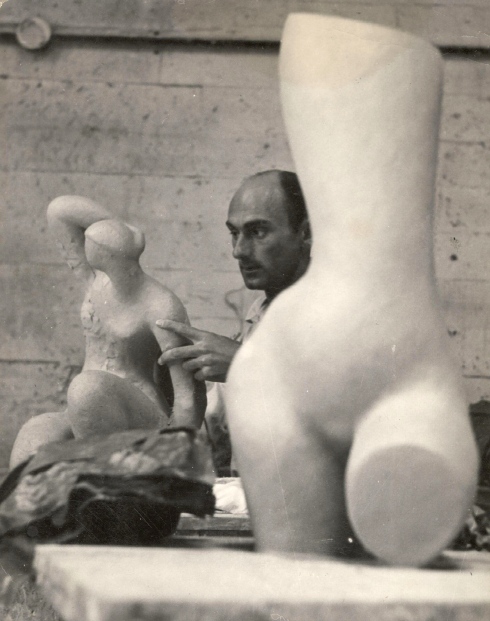

“I like some of my works and some I don’t, but this doesn’t matter at all. The most important thing is that they are being created. The taste is being developed during the working process and by studying the great art works. It takes time, patience and great humility…” – timidly wrote Simonika Dadiani from San Fransisco to his elder sister, Babo Dadiani in Tbilisi.

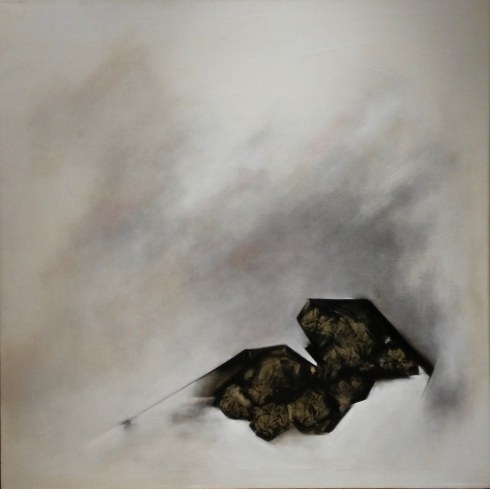

The works we study now and that are very modern even today, we must perceive as a heritage from the past to the future. The world he painted in colors lived within him – with contrasting content, rich and deep. When you watch large-scale abstract works, beyond the thematic paintings, the figures are placed in such a manner that the works seems to be in constant motion, like a series of dynamic shots, expressive and geometrical at the same time…One will also notice that the author adds his individual concepts and energy to the avant-garde storytelling narrative and displays a distinct rhytm. The intellect of a genetically aristocratic artist and the feeling of shape, style and rhytm coexist in Simonika’s paintings and sculptures.
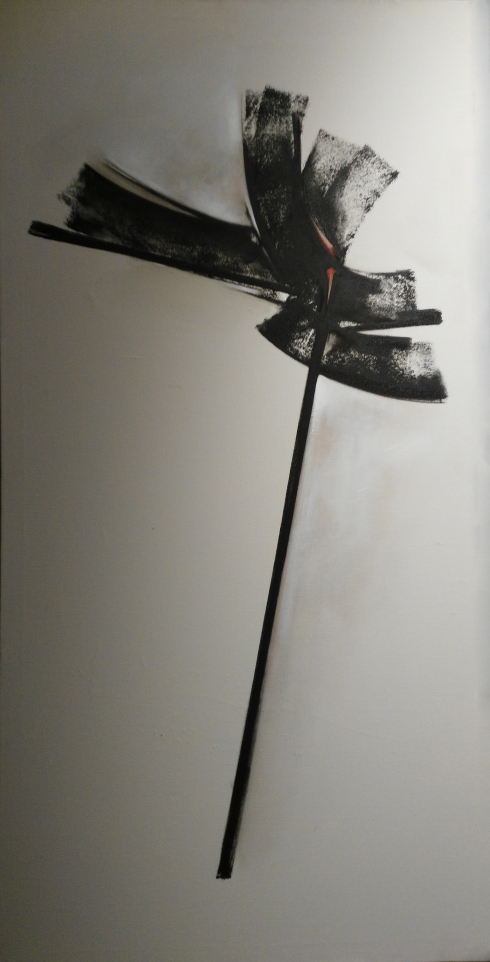

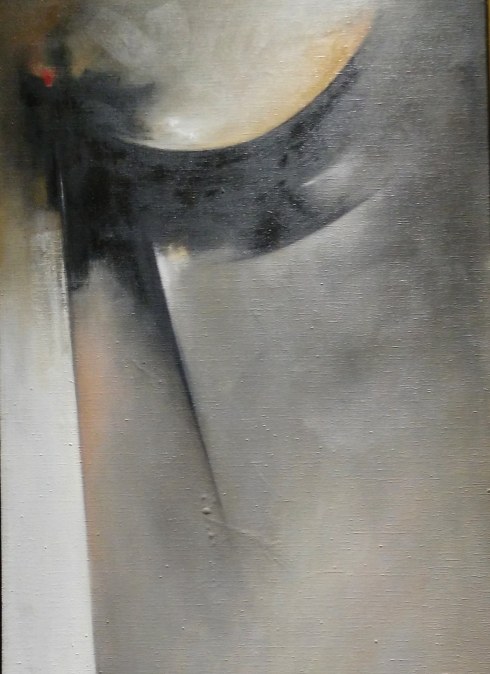
It’s 1921 and Giorgi, Ketevan (Mia) and Simonika Dadiani board a ship in the port of Batumi with their parents… Simonika is only 5 years old at that time and together with his family he follows the first wave of political immigration to France via a famous route Batumi – Constantinopole – Marseille – Paris. Many such ships left Georgia after the Bolshevik occupation… Years pass and they long to return to their homeland but are never able to… this painful experience, which transforms into sorrowful thoughts will be perceived as the mood their lives, as well as the mood of this tragic period. Let’s trace Dadiani family history: Simonika’s father – Nikoloz (Koki) Dadiani, known among the Paris emigration circle as the “sad-eyed prince”, was the leader of Senaki district nobility. He fought for Georgian independence and was the member of National Democratic party and directorate of “White George” organization established among emigrants. Simonika’s great grandfather was the last governor of Abkhazia, Mikheil Shervashidze. His mother was Mary Tsereteli, daughter of Simon Tsereteli himself, the descendent of king of Imereti.
After graduating from the Lycee Pasteur,where Simonika obtains Bachelor’s degree, he travels to Italy to continue his education in Perozzi Fine Art School, later moving to United States to Charlottesville Fine Art school in Virginia. But before he creates his conceptual graphics, the author of the “Black Torso”needs to go through a war… In March 1940, Simon Dadiani moves from Paris to San Fransisco. During WWII, as soon as United States declares war on Germany, he joins the US army as a volunteer and takes part in landing missions on November 8, 1942, first in Casablanca and then in Sicily, where he heroically fights in the harshest battle of Monte Cassino. Svimon Dadiani was among the 7 US soldiers from his battalion that survived this battle. At the same time, he was the only Georgian who fought in US army against Nazis in WWII. He received numerous military awards for such honorable dedication…
The Soviet regime has divided the great noble Dadiani family through repressions, deportations and executions… It is well known that the Bolsheviks called the worthy children of nobility the “people’s enemies” and “pests”. Why did they insult them, why did they drive them away, or why were they afraid of their honor?.. in 1963, after not seeing each other for 43 years, the children of political imigrants met each other, alas on a foreign land. The happiness was overwhelming! Babo Diadiani managed to travel from USSR to Paris to see her siblings, Giorgi and Ketevan (Mia), whom she missed so much. Babo’s stubborn younger brother – Simonika Dadiani, flew in from San Francisco to attend this meeting. The last time they saw each other was in Constantinopole, wasn’t it?! And Simonika was only 5 at that time… the pastoral relationship between Simonika and Babo is very interesting, which flowed with weary hopefulness from Paris to Tbilisi and from Tbilisi to San Francisco:
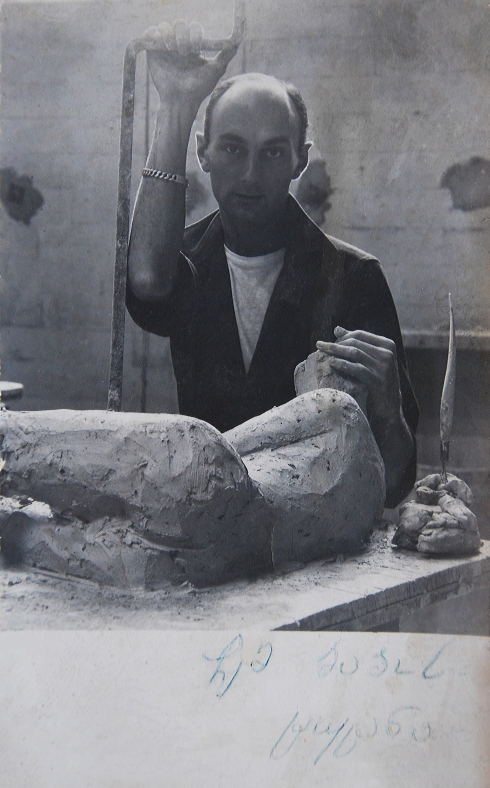
„My Baboshka, seeing you, if only for such a short time, erased all the years we were apart and brought you unbelievably close… now that you have left, all I can talk of is you… I collect all my paintings for your grandchildren. that’s why I stopped giving them away… I have accumulated so many works, that I cannot find a space to place them… you will soon attend your grandchildren’s wedding. And I if I have a chance, will dance a Lekuri… and this will be the first time since my childhood… I was very small when I said that I will dance Lekuri only in Samegrelo. And so it stayed… recently I was looking at the postcards you sent me. You sent me pictures of Martvili… it got me dreaming… I wish all my works would hang together in my father’s house, or in my grandfather’s seaside house… along with my books and who knows how many more works…”
Svimon Dadiani died in 1974 at the age of 57 and was buried at San Francisco Military Cemetary, as an American soldier. The years have passed and the works of Svimon Dadiani – 21 paintings and 2 sculptures have returned to his homeland… The return of this precious treasure was a result of hard and tumulous work of Svimon Dadiani’s descendant Mia Ghviniashvili and the author of this project, documentary filmmaker Nino Khoperia, who brought this process to its logical end. Zviad Mikeladze also took part in this project and created a documentary Film – “The return of Simonika Dadiani”. Following several months of negotiations an agreement was signed in Paris, in attendance of Ekaterine SiradzeDelaunay, ambassador of Georgia to France, which transferred this unique and precious collection as a gift to Georgia. The exhibits, which represent a small portion of the artist’s creative output were given to Film, Music, Theater and Choreography museum of Georgia by Simonika Dadiani’s relatives, Mikheil and Lia Gogitidze–Vode, This was the last dream of the deceised painter” said Mikheil Gogitidze-Vode when signing the agreement.The transfer of Simon Dadiani’s heritage to the Palace of Arts was organized by Ministry of Culture and Sport of Georgia. The last wish of a Georgian emigrant artist was fulfilled finally after many years.
Photos from Babo Dadiani family’s archive
Mzekha Makharadze














Leave a comment